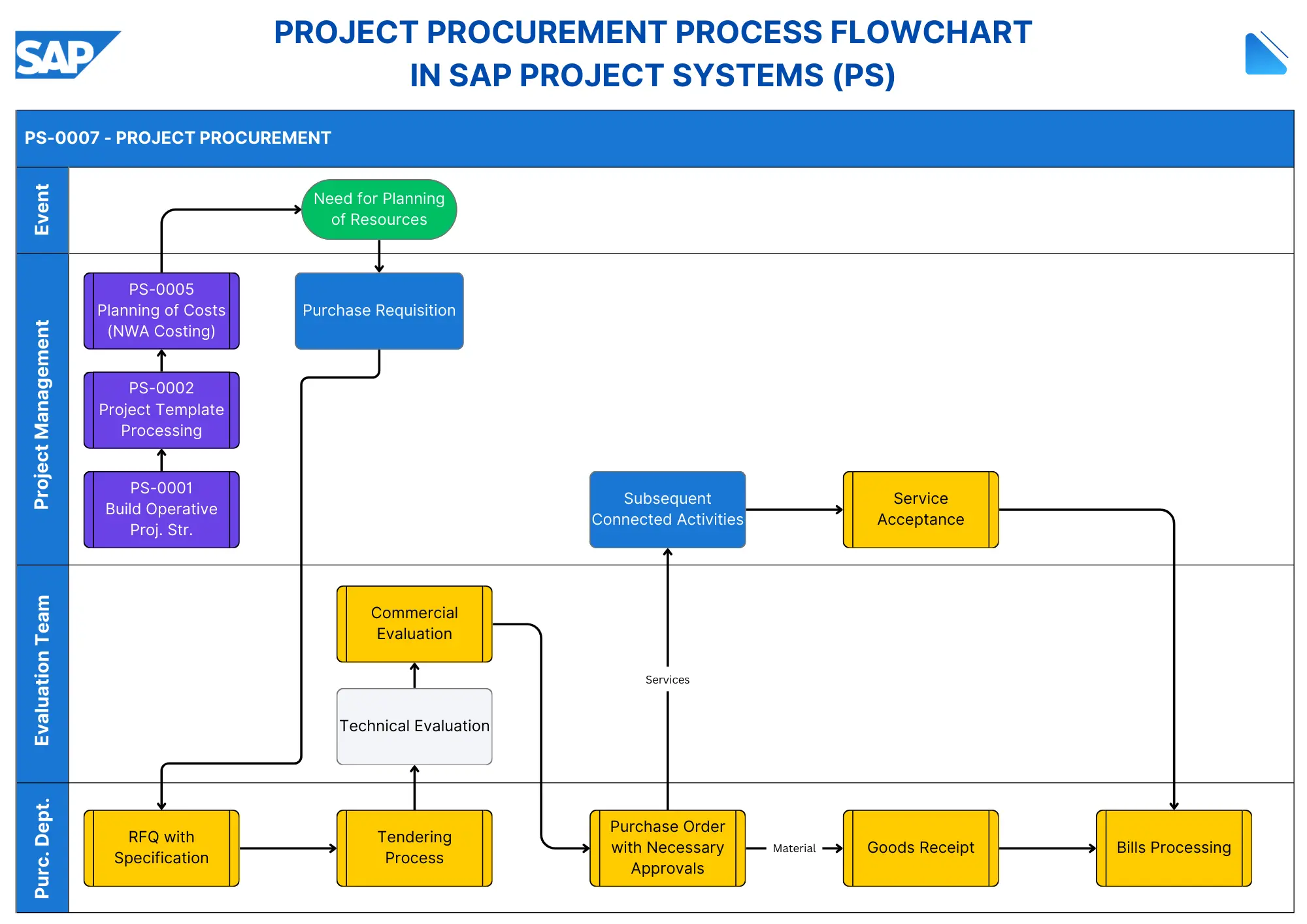The project procurement process in SAP Project Systems is a structured and comprehensive approach to managing the acquisition of goods and services throughout the lifecycle of a project. This process begins with the establishment of foundational project structures, where the planning of costs and resource requirements initiates the procurement activities.
Key Stages of the Project Procurement Process as illustrated in the flowchart image:
- Identification of Needs: The process starts when a need for materials or services is identified within the project framework. This triggers the generation of purchase requisitions, which are internal documents specifying the exact requirements for the Project.
- Evaluation Phase: Once requisitions are created, they enter a structured evaluation phase managed by the Purchasing Department and Evaluation Team. This phase includes:
- Creation of RFQs (Request for Quotations): Detailed RFQs are developed, incorporating technical specifications necessary for potential suppliers.
- Tendering Process: A rigorous tendering process follows, where suppliers are invited to submit their bids.
- Dual Evaluation: The evaluation occurs in two critical stages:
- Technical Evaluation: Assessing features and capabilities of the proposals.
- Commercial Evaluation: Evaluating financial aspects to ensure both technical compatibility and financial viability.
- Purchase Order Creation: After successful evaluations, purchase orders are created with necessary management approvals. This step is crucial as it converts internal commitments into external obligations. The system performs automatic budget availability checks against committed values to ensure financial control.
- Divergence into Material and Service Procurement: The procurement process then diverges based on whether it involves physical materials or services:
- Material Procurement: Focuses on goods receipt, where items are received in accordance with purchase orders and managed as project stock. This ensures that materials are traceable to specific project objects, and goods receipt reduces external commitments by adjusting corresponding purchase order amounts.
- Service Procurement: Involves a series of connected activities leading to service acceptance. Project teams play a vital role in recording measurements and accepting service entries, which then trigger the posting of actual costs to service activities.
- Convergence at Bills Processing Stage: Both paths—material and service procurement—eventually converge at the bills processing stage, completing the procurement cycle.
Integrated Approach for PS and MM in SAP:
SAP’s integrated approach ensures seamless coordination between Project Systems (PS) and Materials Management (MM) modules. This integration maintains data consistency and enables effective project cost control throughout the procurement process. The system’s capability to manage both materials and services within a unified framework while maintaining distinct handling procedures underscores the sophistication of project procurement in SAP.
